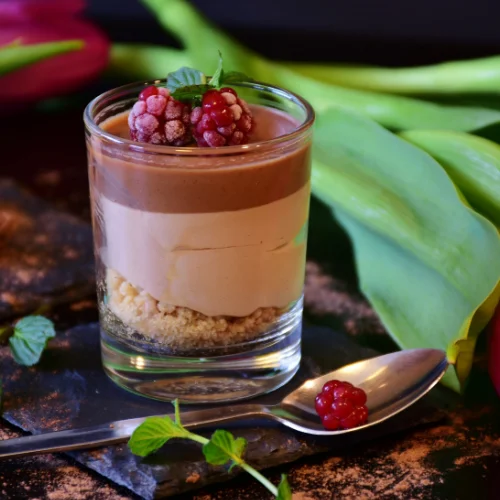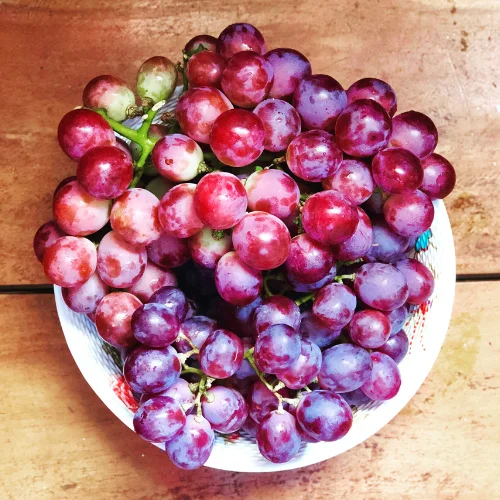10 Soft Desserts for the Elderly
When it comes to catering to the dietary needs of the elderly, it is crucial to consider their unique requirements. Soft desserts play a significant role in providing both pleasure and nutrition to older adults who may have difficulties with chewing or swallowing. In this blog post, we will explore the world of soft desserts for the elderly, discussing their importance, and nutritional considerations, and offering some delectable examples that are sure to delight. Let’s dive in!
The Importance of Soft Desserts
As individuals age, they may experience changes in their oral health, including tooth loss or decreased dental strength. Such conditions can make chewing and swallowing traditional desserts a challenging task. Soft desserts serve as a delightful alternative that ensures older adults can still indulge in sweet treats without discomfort. Additionally, soft desserts provide a valuable source of energy, vitamins, and minerals, promoting overall well-being.
Nutritional Considerations
While soft desserts offer a pleasant experience, it is essential to prioritize their nutritional value for the elderly. Here are a few key considerations:
Fiber
Including fiber-rich ingredients, such as pureed fruits or vegetables, helps maintain healthy digestion and prevents constipation, a common issue among older adults.
Protein
Protein aids in muscle maintenance and repair. Incorporating sources like Greek yogurt or silken tofu into soft desserts can provide this vital nutrient.
Calcium and Vitamin D
To support bone health, consider using ingredients like milk, yogurt, or calcium-fortified alternatives. These can provide essential calcium and vitamin D.
Limited Added Sugars
While a touch of sweetness is enjoyable, excessive sugar intake should be avoided. Opt for natural sweeteners like honey or fruit puree to enhance the taste.
Here Are the 10 Soft Desserts for the Elderly
Puddings and Custards
Puddings and custards are classic soft desserts that are not only easy to eat but also incredibly versatile. Here are a few options to consider:
1. Creamy Rice Pudding

This timeless favorite combines cooked rice, milk, sugar, and a hint of vanilla. It has a smooth texture that is gentle on elderly jaws, making it an ideal choice for those with difficulty chewing.
2. Silky Chocolate Mousse

Indulge in the velvety goodness of a light and airy chocolate mousse. Made with melted chocolate, whipped cream, and eggs, this soft dessert melts in the mouth, offering a heavenly experience.
Gelatin-Based Delights
Gelatin desserts are a fantastic option for the elderly due to their soft, jiggly consistency. They are also great for hydration and can be customized with various flavors and add-ins:
3. Fruit Jelly Cups

Create a refreshing treat by setting your loved one’s favorite fruits in a clear gelatin base. These colorful cups not only provide a burst of flavor but also offer a visual appeal that stimulates the appetite.
4. Yogurt Parfait

Layered with fruit and yogurt, this gelatin-based dessert provides a creamy, fruity experience. It is not only delicious but also an excellent source of calcium and probiotics, promoting gut health.
Smooth and Creamy Delicacies
Smooth and creamy desserts are ideal for those who have difficulty swallowing or have sensitive taste buds. They are easy to prepare and can be customized to suit individual preferences:
5. Banana Ice Cream

Blend ripe bananas with a touch of milk or yogurt to create velvety, dairy-free ice cream. This guilt-free treat is packed with potassium and fiber, making it a healthy option for the elderly.
6. Avocado Pudding

Rich in healthy fats and fiber, avocados are transformed into a creamy pudding with a splash of milk and a hint of sweetness. This dessert not only satisfies a sweet tooth but also provides essential nutrients.
Soft Bites and Chilled Treats
Sometimes, elderly individuals prefer desserts that are bite-sized or served cold. These options cater to their preferences while ensuring a pleasurable dining experience:
7. Frozen Grapes

Freeze seedless grapes for a refreshing and easy-to-eat dessert. The natural sweetness and icy texture makes them a simple yet enjoyable treat that can be savored slowly.
8. Chilled Rice Pudding Cups
Refrigerate individual servings of rice pudding to create a delightful chilled dessert. The cool temperature provides relief, especially during warmer months, while the soft consistency is gentle on the palate.
Nutrient-Packed Smoothies
Smoothies are an excellent way to incorporate a variety of nutrients into a single serving. They can be made with a wide array of ingredients, depending on individual dietary requirements and preferences:
9. Berry Blast Smoothie

Blend a mixture of berries, yogurt, and a liquid of choice (such as milk or coconut water) to create a fruity and refreshing smoothie. This nutrient-packed treat is rich in antioxidants, vitamins, and fiber.
10. Green Goodness Smoothie

For those who enjoy a veggie-filled option, blend spinach, cucumber, banana, and a splash of fruit juice or coconut water. This smoothie is a powerhouse of vitamins, minerals, and antioxidants.
Ensuring Safety and Accessibility
When preparing soft desserts for the elderly, it is crucial to prioritize safety and accessibility. Here are a few suggestions:
Texture Modification
Adjusting the texture of desserts by pureeing, mashing, or blending ingredients can make them easier to consume for individuals with chewing or swallowing difficulties.
Small, Bite-Sized Portions
Offering desserts in smaller, bite-sized portions can make them more manageable to eat, reducing the risk of choking.
Temperature Considerations
Serve desserts at a comfortable temperature, as extreme hot or cold temperatures may cause discomfort or sensitivity to the elderly. Opt for slightly warm or chilled desserts, depending on individual preferences.
Easy-to-Hold Utensils
Provide lightweight utensils, easy to grip, and adapted to the needs of older adults, such as spoons with larger handles or specialized adaptive utensils if necessary.
Alternative Presentation
For individuals with visual impairments or difficulty recognizing certain foods, consider presenting desserts in clear containers or using vibrant colors to enhance visibility and appeal.
Conclusion
Soft desserts play a vital role in enhancing the quality of life for the elderly by providing both pleasure and nutrition. By understanding the importance of soft desserts, considering nutritional considerations, and exploring inspiring ideas, we can create delectable treats that are safe and accessible for older adults.
Now, it’s over to you! What are your favorite soft desserts for the elderly? Have you tried any unique recipes or modifications that worked well?
I’d love to hear your thoughts and experiences in the comments section below. Let’s engage in a conversation to share ideas and inspire each other to create delicious and nutritious soft desserts for our beloved elderly population.
